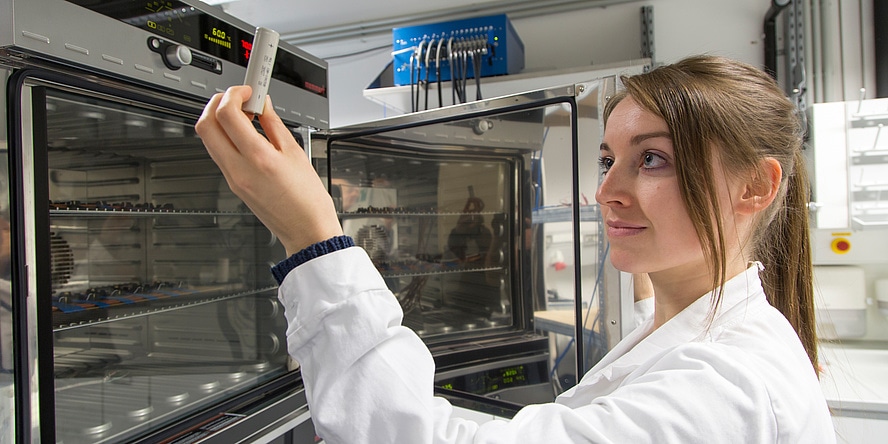Aug 1 2019
At present, solid-state batteries are the most potential technology helping to open the door for the advancement of electric mobility.
 A new class of solid electrolytes for the solid battery of tomorrow: crystalline, but similar to liquid electrolytes in terms of ion mobility. (Image credit: Lunghammer—TU Graz)
A new class of solid electrolytes for the solid battery of tomorrow: crystalline, but similar to liquid electrolytes in terms of ion mobility. (Image credit: Lunghammer—TU Graz)
Batteries consisting of solid-state electrolytes, in which the lithium ions shift between the electrodes, are the Holy Grail of studies on solid-state batteries. Such systems have apparent benefits over traditional lithium-ion batteries, which consist of liquid electrolytes.
Solid-state solutions possess a higher energy density and are considerably safer because of their non-flammable components.
However, so far, there was a gap in terms of appropriate materials with conductivity levels similar to liquid electrolytes. Along with collaborators from the Technical University of Munich and UCLouvain in Belgium, TU Graz scientists have now reported details of a potential crystalline ionic conductor, which shows extremely high lithium-ion mobility, in the journal Chem.
The diffusion coefficient increases beyond other most likely candidates currently under study.
Ions Searching in Vain for a Place to Rest
Lithium-titanium thiophosphate, also called LTPS with reference to its chemical formula LiTi2(PS4)3, is the new ionic conductor. LTPS has a unique crystalline structure typified by the so-called “geometric frustration.” Unlike other ionic conductors, LTPS does not provide any energetically highly beneficial locations for the ions to occupy.
They are never contented with their existing location, which causes a state of “frustration.” Calculations performed by Geoffroy Hautier’s group at UCLouvain in Belgium show that this frustration of the ions leads to extremely high lithium mobility.
The lithium ions seek out suitable sites in a rather frantic way, meaning that they move through LTPS’s crystallographic structure extremely rapidly. This high ionic mobility is exactly what we’re after for use in solid-state electrolytes for solid-state batteries.
Martin Wilkening, Institute for Chemistry and Technology of Materials, TU Graz
Wilkening is also the Director of the university’s Christian Doppler Laboratory for Lithium Batteries.
Movement Even at Very Low Temperatures
Wilkening’s group experimentally verified the estimated high degree of mobility using nuclear magnetic resonance (NMR) spectroscopy methods.
We found clear evidence of two jump processes which entirely corroborate the results of our calculations. In the structure of LTPS, the lithium-ions can jump via ring-shaped paths back and forth, and from one ring to the next. The latter of these processes, the inter-ring process, enables the long-range ionic transport.
Martin Wilkening, Institute for Chemistry and Technology of Materials, TU Graz
It was impossible to fully shut off the intra-ring jump processes of the lithium ions even under cryogenic conditions, so at very low temperatures. The lithium ions continue to move at 20 K—or −253 °C—on the NMR spectroscopy sensitivity scale, and still look for appropriate potential wells within the extremely flat energy landscape of the LTPS.
According to Wilkening, a behavior such as this is extremely unusual: “At lower temperatures the ions are sapped of their thermal energy and their mobility decreases significantly. It’s remarkable that we observed ionic mobility even at such low temperatures in LTPS. This is evidence of how strong the ion’s compulsion to move around in LTPS is.”
There is obviously no need for the working temperature of a solid-state battery, for instance, in an electric car, to be too low.
Representing a New Class of Materials
The super-fast diffusion process, resulting from energetic frustration, makes LTPS one of the new classes of solid-state electrolytes. These electrolytes are crystalline; however, their motional properties are more comparable to those of liquid electrolytes.
At present, the finding and experimental study into LTPS is the starting point in the quest for further compounds with characteristics which make similar conduction mechanisms possible.
The research was carried out in partnership with Toyota. UCLouvain has applied for a patent for the discovery of LTPS.